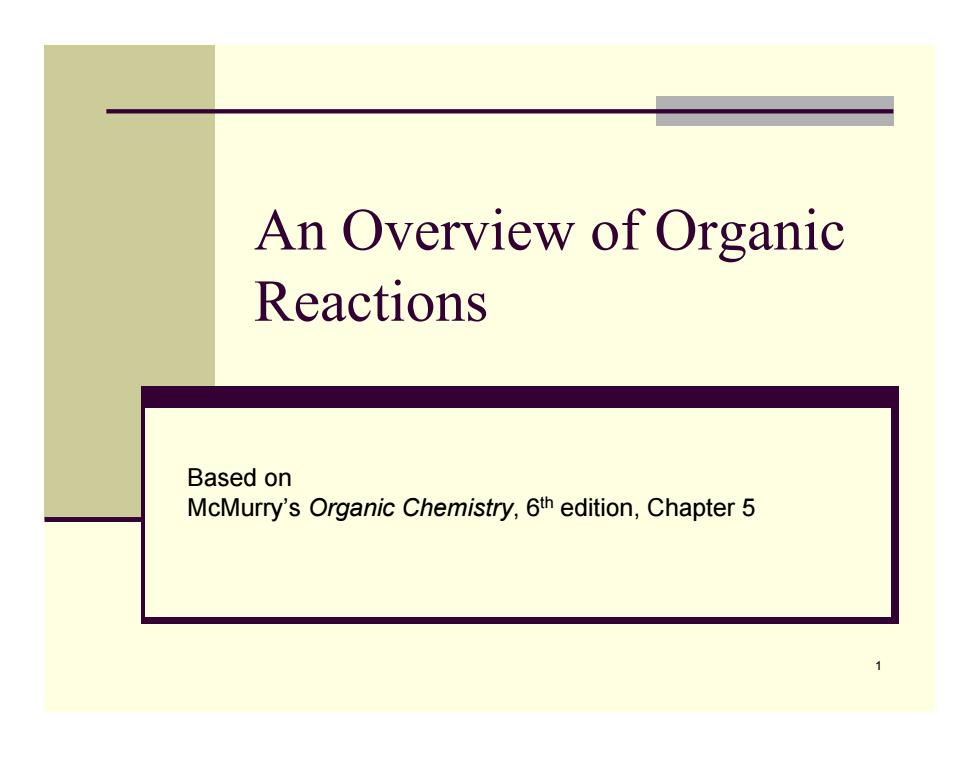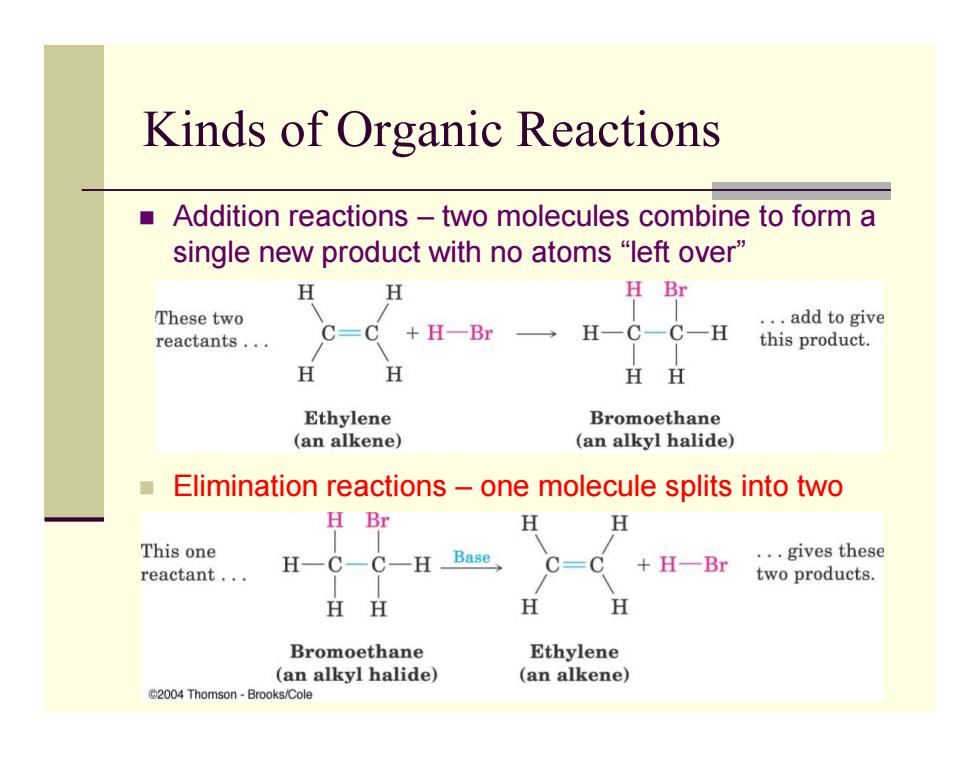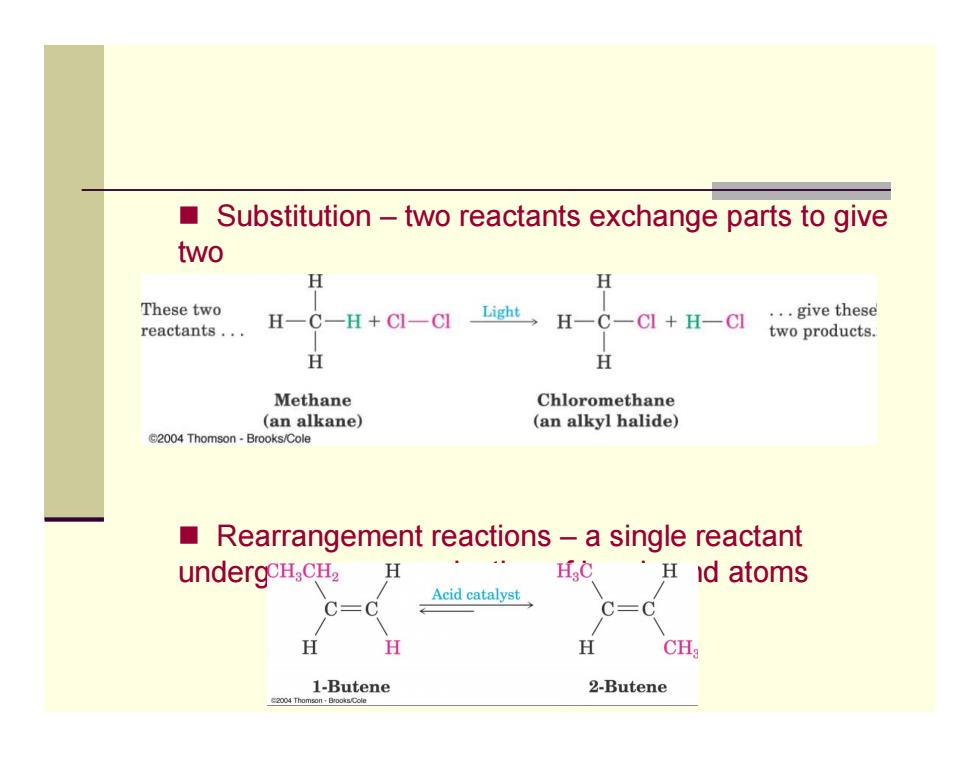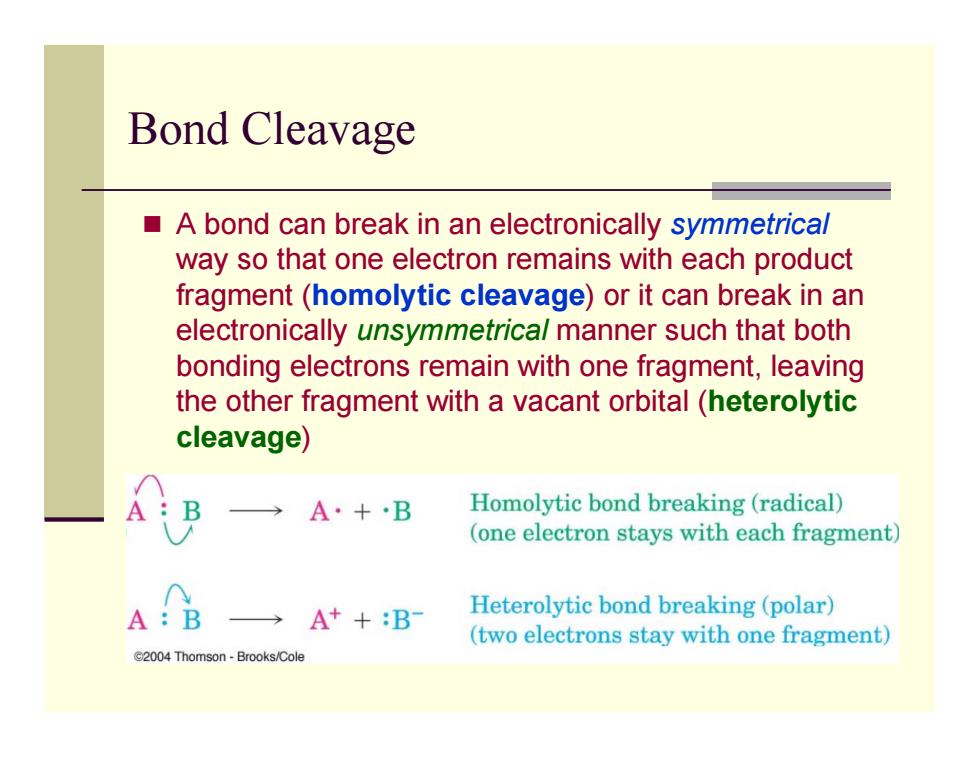
An Overview of Organic Reactions Based on McMurry's Organic Chemistry,6th edition,Chapter 5
1 An Overview of Organic Reactions Based on McMurry’s Organic Chemistry, 6th edition, Chapter 5

Kinds of Organic Reactions Addition reactions -two molecules combine to form a single new product with no atoms"left over" H H H Br These two C=C+H-Br→H-C-C-H add to give reactants... this product. H H HH Ethylene Bromoethane (an alkene) (an alkyl halide) ■ Elimination reactions-one molecule splits into two H Br H H This one ...gives these reactant... H-C-C-H Base +H一Br two products. HH H H Bromoethane Ethylene (an alkyl halide) (an alkene) 2004 Thomson-Brooks/Cole
Kinds of Organic Reactions Addition reactions – two molecules combine to form a single new product with no atoms “left over” Elimination reactions – one molecule splits into two

Substitution-two reactants exchange parts to give two H H These two H一C-H+CI一C Light H一C一CI+H一C ..give these reactants... two products H H Methane Chloromethane (an alkane) (an alkyl halide) @2004 Thomson-Brooks/Cole Rearrangement reactions-a single reactant undergcHCH H HC H id atoms Acid catalyst H H CHa 1-Butene 2-Butene
Substitution – two reactants exchange parts to give two new products Rearrangement reactions – a single reactant undergoes a reorganization of bonds and atoms

How Organic Reactions Occur:Mechanisms A mechanism describes in detail exactly what takes place in each stage of a chemical transformation: -which bonds are broken(formed)and in what order relative rates of each step of the reaction A complete mechanism must account for all reactants used,all products formed and the amount of each Each step involves either the formation or breaking of a covalent bond -steps can occur in individually or in combination with other steps when several steps occur at the same time they are said to be concerted
How Organic Reactions Occur: Mechanisms A mechanism describes in detail exactly what takes place in each stage of a chemical transformation: - which bonds are broken (formed) and in what order - relative rates of each step of the reaction A complete mechanism must account for all reactants used, all products formed and the amount of each Each step involves either the formation or breaking of a covalent bond - steps can occur in individually or in combination with other steps - when several steps occur at the same time they are said to be concerted

Bond Cleavage A bond can break in an electronically symmetrical way so that one electron remains with each product fragment (homolytic cleavage)or it can break in an electronically unsymmetrica/manner such that both bonding electrons remain with one fragment,leaving the other fragment with a vacant orbital (heterolytic cleavage) A·+B Homolytic bond breaking(radical) (one electron stays with each fragment) A:B →A++B Heterolytic bond breaking(polar) (two electrons stay with one fragment) C2004 Thomson-Brooks/Cole
Bond Cleavage A bond can break in an electronically symmetrical way so that one electron remains with each product fragment (homolytic cleavage) or it can break in an electronically unsymmetrical manner such that both bonding electrons remain with one fragment, leaving the other fragment with a vacant orbital (heterolytic cleavage)